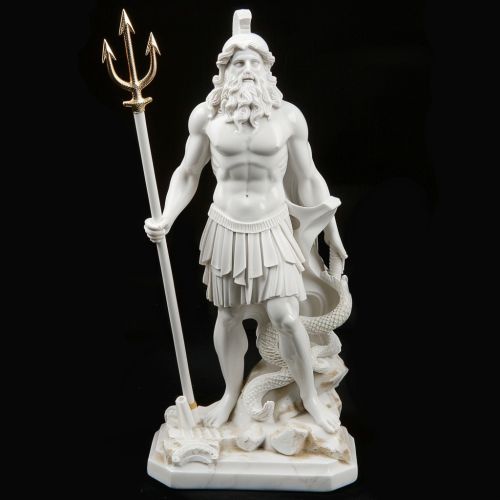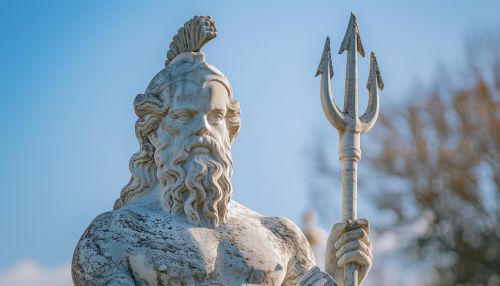Poseidon
Overview
Poseidon, in ancient Greek religion, was one of the twelve Olympian deities and the god of the sea, earthquakes, and horses. Known as the "earth-shaker", he is one of the three chief deities of the Greek pantheon, along with his brothers Zeus and Hades. In art, he is depicted as a mature man of sturdy build, often holding a trident.


Etymology
The name Poseidon means either "husband of the earth" or "lord of the earth". Traditionally, Poseidon was a son of Cronus and Rhea, and the brother of Zeus and Hades. Poseidon has many children by various women, both mortal and immortal, and is famously the father of the hero Theseus.
Cult of Poseidon
Poseidon was worshipped in many parts of Greece, particularly where there were springs, rivers, or the sea. His main cult centres were in Corinth, the coastal region of Attica, and the islands of the Aegean Sea. He was often worshipped in conjunction with Athena, the goddess of wisdom, craft, and war. The two deities were seen as complementary: Poseidon represented the physical world and the forces of nature, while Athena represented the intellectual and civilized side of life.
Poseidon in Mythology
Poseidon features prominently in a number of Greek myths. He is perhaps best known for his role in the Trojan War, where he supported the Greeks. He is also a key player in the myth of Odysseus, where he is depicted as the primary antagonist, punishing Odysseus for blinding his son, the Cyclops Polyphemus.
Symbolism and Representation
Poseidon is often depicted with his three-pronged trident, a symbol of his power over the sea. Other symbols associated with Poseidon include the horse, the bull, the dolphin, and the fish. In ancient art, Poseidon is often shown riding a chariot pulled by horses or mythical sea creatures.
Legacy
Poseidon's influence can be seen in various aspects of modern culture, particularly in literature and film. He is often used as a symbol of the sea and its power, and his myths have been retold and reinterpreted in numerous ways.
